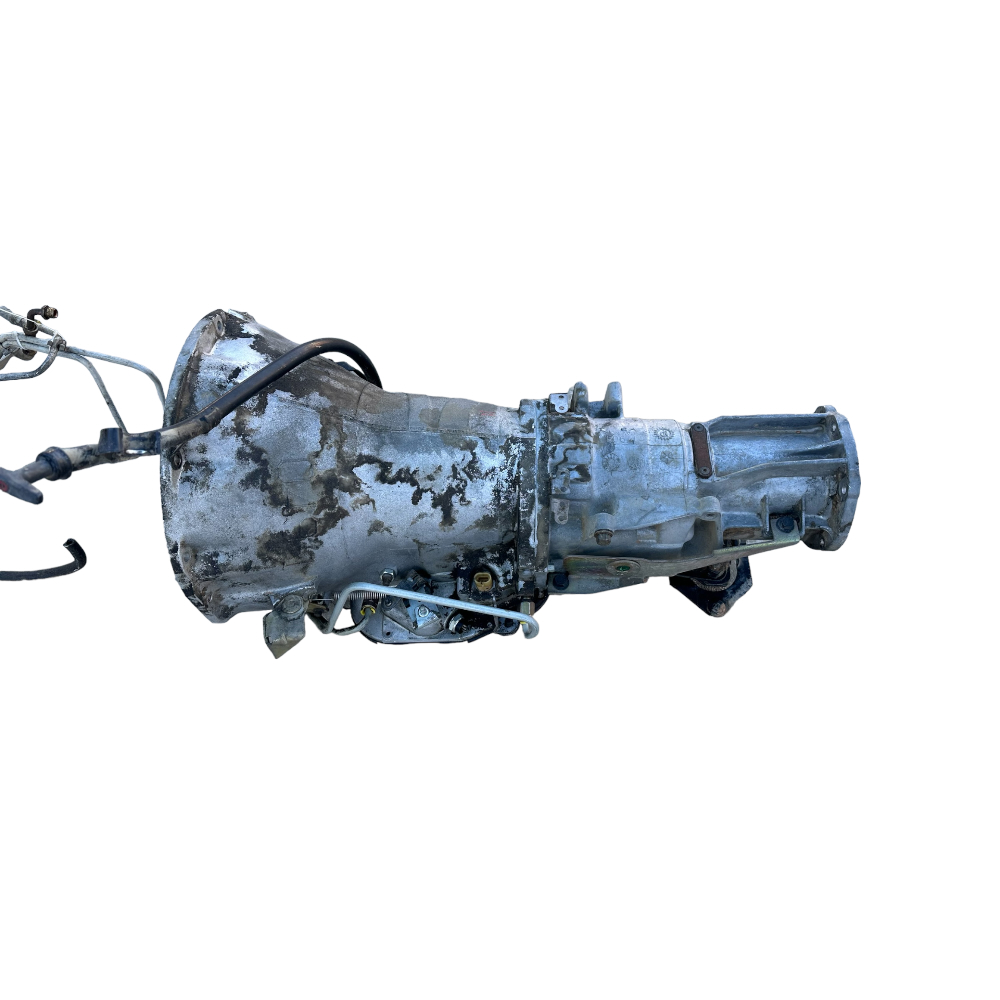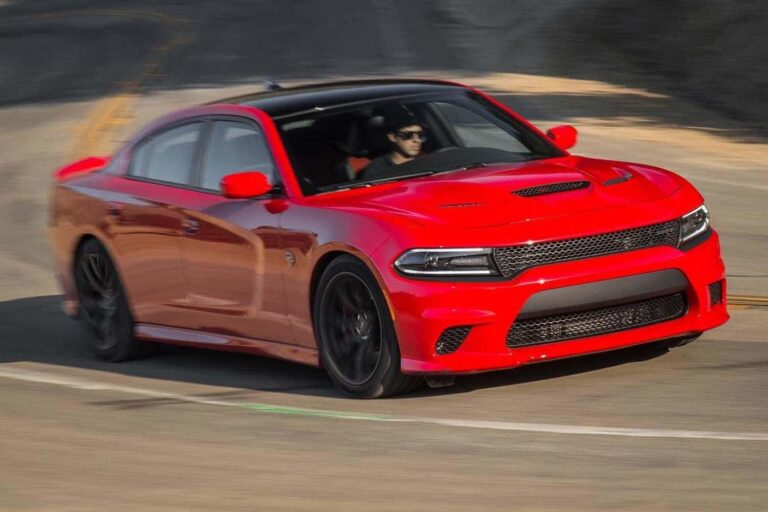95 Jeep Grand Cherokee For Sale: Your Comprehensive Guide to Buying a Classic ZJ
95 Jeep Grand Cherokee For Sale: Your Comprehensive Guide to Buying a Classic ZJ /jeeps.truckstrend.com
The year 1995 holds a special place in the hearts of many automotive enthusiasts, particularly those with a penchant for rugged capability and timeless design. It was a peak year for the first-generation Jeep Grand Cherokee, affectionately known by its chassis code, the ZJ. More than just a used SUV, a 95 Jeep Grand Cherokee for sale represents an opportunity to own a piece of American automotive history – a vehicle renowned for its blend of off-road prowess, surprising comfort, and enduring character. Whether you’re a seasoned Jeeper looking for a project, an off-road adventurer on a budget, or simply someone seeking a reliable and distinctive daily driver, understanding what makes the ’95 ZJ special, and what to look for when buying one, is crucial.
This comprehensive guide will delve into the enduring appeal of the 1995 Jeep Grand Cherokee, highlight its key features, offer practical advice on navigating the market, provide a detailed pre-purchase inspection checklist, address common challenges, and help you make an informed decision on your next classic SUV.
95 Jeep Grand Cherokee For Sale: Your Comprehensive Guide to Buying a Classic ZJ
The Enduring Appeal of the 1995 Jeep Grand Cherokee (ZJ)
Introduced in 1993, the Grand Cherokee (ZJ) quickly became a sales sensation, bridging the gap between the utilitarian Cherokee XJ and more luxurious SUVs. The 1995 model year, in particular, benefited from a few refinements and a solid reputation established over its first two years.
Its appeal stems from several core strengths:
- Rugged Design: The ZJ’s muscular yet refined exterior design has aged remarkably well, retaining a classic SUV silhouette that stands out from today’s more rounded crossovers.
- Off-Road Capability: True to its Jeep lineage, the ’95 Grand Cherokee boasts solid axles (Dana 30 front, Dana 35c or 44a rear), respectable ground clearance, and robust 4×4 systems, making it surprisingly capable on trails, especially when equipped with the right transfer case.
- Engine Choices: Buyers in 1995 had the choice between the legendary 4.0L inline-six (I6) engine, known for its bulletproof reliability and torque, and the more powerful 5.2L V8, offering smoother acceleration and increased towing capacity. Both engines are well-regarded workhorses.
- Comfort and Features (for its era): Compared to its XJ sibling, the ZJ offered a significantly more refined interior, with options like leather seating, power accessories, automatic climate control, and an Infinity sound system, making it a comfortable family vehicle or road trip companion.
- Nostalgia and Classic Status: For many, the ’95 Grand Cherokee evokes memories of a simpler time in motoring, before SUVs became ubiquitous. It’s now entering the realm of classic vehicles, appreciated for its character and mechanical simplicity compared to modern, highly computerized cars.

Key Features and Specifications to Look For
When searching for a 95 Jeep Grand Cherokee for sale, understanding its core configurations is vital:
- Engine Options:
- 4.0L Inline-6 (AMC 242): This venerable engine is celebrated for its longevity and ease of maintenance. It offers ample torque for most off-road situations and is generally more fuel-efficient than the V8. Ideal for reliability and daily driving.
- 5.2L V8 (Magnum): Offering significantly more horsepower and torque, the V8 provides brisk acceleration and better towing capabilities. It’s often preferred by those seeking more power or planning heavier modifications.
- Transmission: Both engine options were paired with a robust 4-speed automatic transmission (AW4 for the I6, 46RH for the V8). Manual transmissions are extremely rare in ZJs.
- Transfer Cases (Crucial Choice):
- NP242 Selec-Trac: This is often considered the most desirable transfer case. It offers 2WD, Part-Time 4WD (for off-road), Full-Time 4WD (for pavement), N (Neutral), and 4-Low. Its versatility makes it excellent for varied conditions.
- NP249 Quadra-Trac: This is a full-time all-wheel-drive system with a viscous coupler, offering 4WD Auto, N, and 4-Low. While convenient, the viscous coupler is a known failure point with age, leading to binding and potential damage if not replaced. Many enthusiasts swap these out for an NP242 or NP231.
- Axles:
- Front: Dana 30 – generally strong enough for most uses.
- Rear: Dana 35c (common with 4.0L) or Dana 44a (common with 5.2L). The Dana 35c is notoriously weak for heavy off-roading or larger tires. The Dana 44a is better but still has an aluminum center section that can be prone to bending.
- Trim Levels:
- Base/SE: More spartan, often with cloth seats and fewer power options.
- Laredo: The most common trim, offering a good balance of features and affordability, often with power windows/locks, cruise control, and alloy wheels.
- Limited: The top-tier luxury trim, featuring leather seats, power moonroof, automatic climate control, woodgrain trim, and premium sound systems.
- Orvis Edition: A special edition for 1995 (and 1996), known for its distinctive Moss Green paint, tan leather interior with red accents, and unique badging. These are rarer and often command a premium.


Navigating the Market: Where to Find a 1995 Jeep Grand Cherokee For Sale
Finding a well-maintained 95 Jeep Grand Cherokee for sale requires patience and knowing where to look.
- Online Marketplaces:
- Craigslist & Facebook Marketplace: These are prime hunting grounds for private sellers. Be prepared for a wide range of conditions and pricing. Use specific search terms like "1995 Jeep Grand Cherokee," "ZJ," or "Grand Cherokee 4.0."
- eBay Motors: Good for finding vehicles nationwide, often with more detailed listings and sometimes even auction formats.
- Dedicated Jeep Forums/Groups: Websites like JeepForum.com or specific ZJ enthusiast Facebook groups often have classified sections where members sell well-cared-for vehicles or project rigs. These can be excellent sources as sellers often know the vehicle’s history.
- Local Classifieds/Auto Traders: Less common now, but still worth a glance.
- Used Car Dealerships: While most dealerships won’t carry a ’95 model, smaller, independent used car lots might occasionally have one. Be more cautious here, as they may not specialize in older Jeeps.
- Word-of-Mouth: Let friends, family, and local mechanics know you’re looking. You might stumble upon a gem.
Tips for Searching:
- Be Specific but Flexible: Search for "1995 Jeep Grand Cherokee" but also broaden to "Jeep ZJ" or "Grand Cherokee 4×4" to catch all listings.
- Filter by Price and Distance: Set realistic ranges.
- Look for Detailed Descriptions and Photos: Good sellers provide ample information. Be wary of listings with vague descriptions or poor-quality photos.
- Ask Questions: Before arranging a viewing, ask about mileage, engine type, transfer case, known issues, and maintenance history.
What to Inspect Before Buying: A Pre-Purchase Checklist
Buying an older vehicle like a 95 Jeep Grand Cherokee for sale requires a thorough inspection. Bring a flashlight, a magnet (for checking body filler), and ideally, a trusted mechanic.
- Mechanical Inspection:
- Engine: Check for oil leaks (especially around the valve cover, oil pan, and rear main seal). Listen for knocks, ticks (common with 4.0L piston slap when cold, but can indicate more serious issues), or unusual noises. Check coolant for sludge or oil.
- Transmission: Shift through all gears while stationary and during a test drive. Check for harsh shifts, slipping, or delayed engagement. Fluid should be red and clear, not brown or burnt-smelling.
- Transfer Case: Ensure it shifts smoothly into all ranges (2WD, 4WD Hi, 4WD Low). Listen for grinding or clunking. For NP249, check for binding during tight turns on pavement, indicating a failing viscous coupler.
- Suspension: Look for worn shocks (bouncy ride), broken coil springs, cracked bushings (control arms, sway bars), and damaged tie rod ends. Lift kits can hide issues or introduce new ones if not installed correctly.
- Brakes: Check pad and rotor wear. Listen for grinding or squealing. Test the parking brake.
- Steering: Check for excessive play in the steering wheel. Listen for groaning from the power steering pump.
- Exhaust: Look for rust, holes, or poorly done repairs.
- Tires: Check tread depth, uneven wear (indicating alignment or suspension issues), and tire age (sidewall date code).
- Body & Frame Inspection:
- Rust: This is the biggest enemy of older Jeeps. Pay close attention to rocker panels, floorboards, rear quarter panels, frame rails (especially near control arm mounts), and inner fender wells. Use a magnet to detect body filler over rust.
- Accident Damage: Look for misaligned body panels, inconsistent paint color, overspray, or evidence of significant repairs.
- Underbody: Check for dents, scrapes, or damage from off-roading.
- Interior Inspection:
- Electrical: Test all power windows, door locks, mirrors, radio, HVAC controls, dashboard lights, and exterior lights. Electrical gremlins are common.
- HVAC: Ensure the fan works on all speeds, and that the blend door actuator functions correctly (hot/cold air selection).
- Seats: Check for tears, stains, and proper adjustment.
- Headliner: Sagging headliners are very common and can be costly to repair.
- Dashboard: Look for cracks, especially around the passenger airbag area.
- Documentation and History:
- Service Records: Ask for any maintenance history. This is invaluable.
- Ensure it’s clear and matches the VIN on the vehicle.
- VIN Check: Run a CarFax or AutoCheck report to reveal accident history, mileage discrepancies, and previous ownership.
- Test Drive:
- Drive it on various road surfaces, including highway speeds.
- Listen for unusual noises (clunks, grinding, squeaks, hums).
- Check acceleration, braking (smooth and straight), and steering response.
- Test the 4WD system if safe to do so (on loose surfaces, not pavement).
Common Issues and Potential Challenges
While the ’95 ZJ is robust, certain issues are common due to age:
- Rust: As mentioned, this is pervasive, especially in areas that use road salt.
- Headliner Sag: Almost universal in older ZJs.
- HVAC Blend Door Actuator: A common failure that prevents proper hot/cold air mixing. Repair can be involved.
- NP249 Viscous Coupler Failure: Causes binding in turns and can lead to drivetrain damage. A common upgrade is swapping to an NP242 or NP231.
- Cooling System: Radiators, water pumps, and thermostats are wear items. Keep an eye on temperatures.
- Electrical Gremlins: Power window motors, central locking, and gauge cluster issues can arise.
- Drivetrain Components: U-joints, CV joints, and differential bearings can wear out.
- Rear Axle: The Dana 35c (common with 4.0L) is prone to failure with larger tires or aggressive off-roading. The Dana 44a (common with 5.2L) is better but still has limitations.
- Oil Leaks: The 4.0L is famous for minor oil leaks, especially the rear main seal, though not always critical.
Tips for a Successful Purchase and Ownership
- Set a Realistic Budget: The purchase price is just the beginning. Factor in immediate repairs, maintenance, and potential upgrades.
- Pre-Purchase Inspection (PPI): If you’re not mechanically inclined, pay a trusted mechanic (preferably one familiar with Jeeps) to perform a thorough inspection. It’s money well spent.
- Join the Community: Jeep forums and Facebook groups are invaluable resources for advice, troubleshooting, and finding parts.
- Be Prepared for DIY: Many common ZJ issues can be fixed by a moderately skilled DIYer, saving significant money on labor.
- Understand its Limitations: It’s a 28-year-old vehicle. Expect some quirks and don’t compare its performance or features to a modern SUV.
95 Jeep Grand Cherokee For Sale: Price Table
The price of a 1995 Jeep Grand Cherokee can vary wildly based on condition, mileage, engine, trim level, and geographical location. This table provides a general estimate.
| Condition Category | Mileage Range | Engine Type | Approximate Price Range (USD) | Key Considerations |
|---|---|---|---|---|
| Poor/Project | 200,000+ | Any | $500 – $1,500 | Significant rust, major mechanical issues (engine/trans problems), non-running, body damage. Best for experienced mechanics or parts. |
| Fair/Driver | 150,000 – 200,000 | Any | $1,500 – $3,500 | Runs and drives, but likely has noticeable rust, cosmetic flaws, and multiple minor to moderate mechanical issues requiring immediate attention (e.g., worn suspension, leaks, electrical glitches). |
| Good/Solid Driver | 100,000 – 150,000 | 4.0L I6 / 5.2L V8 | $3,500 – $6,000 | Well-maintained, minimal rust (surface only), all major systems functional. May have minor cosmetic wear or small, easily fixable issues. Ready for daily driving with routine maintenance. |
| Excellent/Collector | Under 100,000 | 4.0L I6 / 5.2L V8 | $6,000 – $10,000+ | Exceptionally well-preserved, low mileage, minimal to no rust, original paint in great condition, fully functional. Often a "garage queen" or meticulously restored example. Orvis editions might fetch higher. |
Disclaimer: These prices are estimates and can fluctuate significantly based on local market demand, specific modifications (e.g., lift kits, aftermarket bumpers), and the presence of rare options or extensive service history.
Frequently Asked Questions (FAQ) about the 95 Jeep Grand Cherokee
Q1: Is the 1995 Grand Cherokee reliable?
A1: Yes, generally. The 4.0L inline-six engine is legendary for its reliability and longevity, often lasting well over 200,000 miles with proper maintenance. The 5.2L V8 is also robust. However, as with any vehicle of its age, components like the cooling system, electricals, and suspension will require attention due to wear and tear.
Q2: Which engine is better, the 4.0L or 5.2L?
A2: It depends on your priorities. The 4.0L I6 is known for its incredible reliability, easier maintenance, and slightly better fuel economy, making it ideal for daily driving and light off-roading. The 5.2L V8 offers more power and torque, better for towing or if you simply prefer the feel of a V8, but it will consume more fuel.
Q3: What’s the best transfer case for a 1995 Grand Cherokee?
A3: The NP242 Selec-Trac is generally considered the best due to its versatility (2WD, Full-Time 4WD, Part-Time 4WD, 4-Low). The NP249 Quadra-Trac, while full-time, has a viscous coupler that is prone to failure with age, leading to binding issues. Many enthusiasts swap out the NP249 for an NP242 or NP231.
Q4: How much does a 1995 Grand Cherokee typically cost?
A4: Prices vary widely based on condition, mileage, and location. As per the table above, you could find a project vehicle for under $1,500, a decent driver for $3,500-$6,000, and a pristine example for $6,000-$10,000 or more.
Q5: Are parts readily available for the 1995 Grand Cherokee?
A5: Yes, parts availability is excellent. Given the ZJ’s popularity and shared components with other Jeep models (like the Cherokee XJ), most common wear items, aftermarket parts, and even some body panels are still easily found new or used.
Q6: Can a 1995 Grand Cherokee be used for daily driving?
A6: Absolutely, many people still daily drive their ZJs. With proper maintenance and addressing any age-related issues, they can be reliable commuters. However, fuel economy will be lower than modern vehicles, and the ride might be rougher.
Q7: What are the most common rust areas to check on a ZJ?
A7: Pay close attention to the rocker panels, floorboards (especially under the carpets), rear quarter panels, lower parts of the doors, tailgate, and the frame rails, particularly near suspension mounting points.
Conclusion
The pursuit of a 95 Jeep Grand Cherokee for sale is more than just a car purchase; it’s an investment in a piece of automotive heritage. The ZJ generation offers a unique blend of rugged capability, classic design, and surprising comfort that continues to captivate enthusiasts. While potential buyers must be aware of common age-related issues and diligent in their pre-purchase inspection, the rewards of owning and driving this iconic SUV are significant.
With its reliable engine options, capable 4×4 systems, and a vast community of support, a well-chosen 1995 Grand Cherokee can serve as a dependable daily driver, a formidable off-road companion, or a rewarding restoration project. Approach your search with knowledge, patience, and a realistic budget, and you could soon be enjoying the timeless appeal of a classic ZJ.





